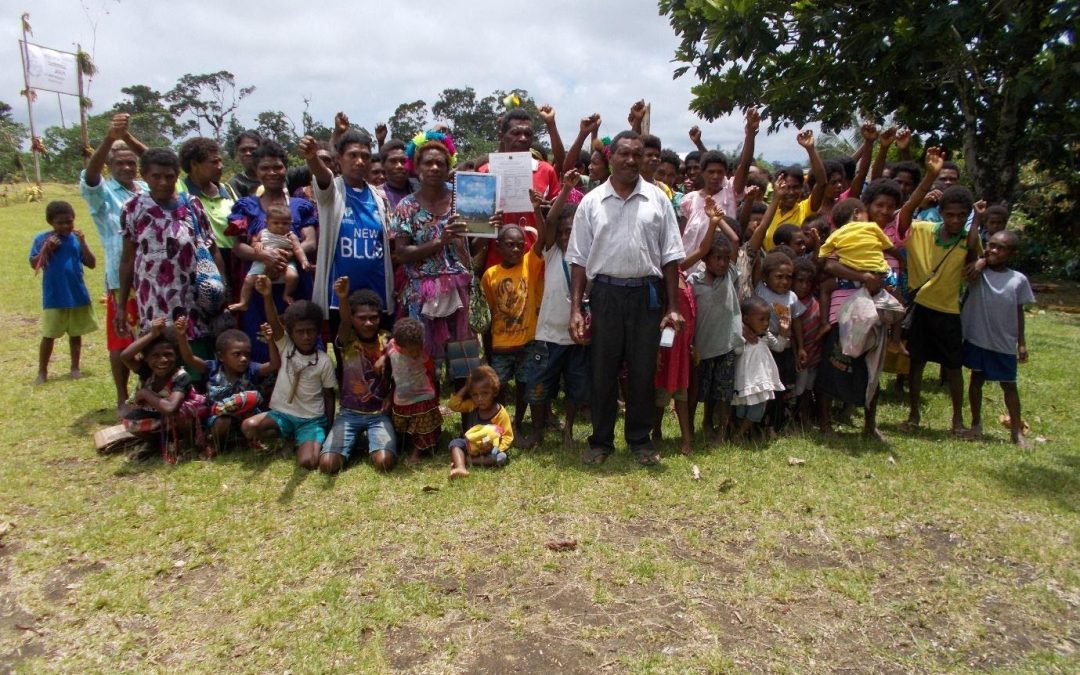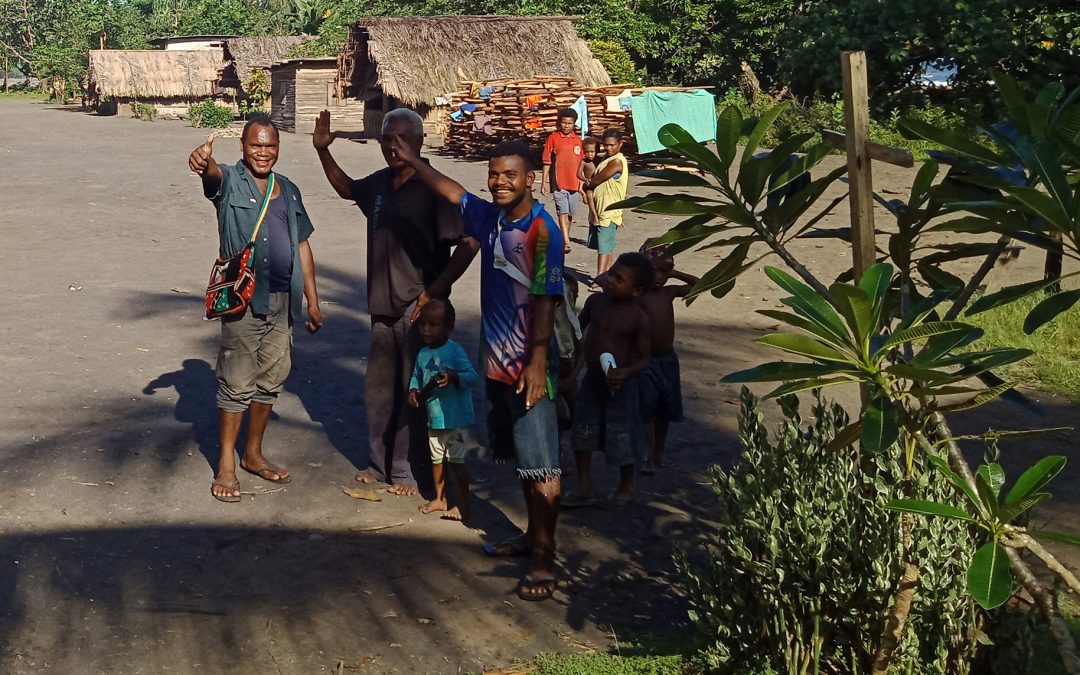COMMUNITY OUTREACH
FORCERT’s main work is empowering our partner communities to reach their potential and achieve the outcomes they want.
OUR CORE WORK
Empowering Papua New Guinean communities through sustainable land use planning and community action planning processes, and through village-based enterprise support. This allows communities to take the lead in their change, and enables them to balance their environmental, economic, social, and cultural values and interests.
FEATURED COMMUNITIES
Check out some of our great partner communities
 AINBUL - The neatly kept cocoa farming community of Ainbul, a FORCERT partner community since 2008, is located in the very middle of New Britain Island. The community is made up of newly settled farmers who in 1990 moved from their ancestral grounds up to the current location in search of road access and markets for cash …
AINBUL - The neatly kept cocoa farming community of Ainbul, a FORCERT partner community since 2008, is located in the very middle of New Britain Island. The community is made up of newly settled farmers who in 1990 moved from their ancestral grounds up to the current location in search of road access and markets for cash …  TAVOLO - Located at the southern edge of the border between east and west New Britian, Tavolo has been a long term partner community to FORCERT and has helped guide us as much as we have helped support them. Our partner community Tavolo, located on the South Coast of New Britain Island, on the border of East …
TAVOLO - Located at the southern edge of the border between east and west New Britian, Tavolo has been a long term partner community to FORCERT and has helped guide us as much as we have helped support them. Our partner community Tavolo, located on the South Coast of New Britain Island, on the border of East … LEARN ABOUT THE TOOLS WE USE
Using national and international best practices, and by adjusting them through trial and error, we have created a number of tools that we share with the communities we work with to improve their outcomes
High Conservation Values
Improving Conservation Outcomes
Our HCV process enables communities to combine traditional and modern knowledge in order to recognize the value of their flora, fauna, and natural resources.
By recognising the history of their traditional plant, animal species and resources our partner communities are better able to decide the best way to protect these resources, by compiling the traditional knowledge surrounding the resources the people are able to ensure that their traditional knowledge is passed onto future generations.
Throughout this process we ensure that the voices in the community are heard, including those of women, youth and other disadvantaged groups, and that every member of the community feels empowered to let their voice be heard.
At the end of the process, the community agrees on their community conservation laws, and on the areas to be put under various forms of conservation management, ranging from complete no-go zones to areas where restricted collection or hunting may be allowed. A community conservation committee is elected to help monitor and enforce the laws.
PNG
Historical Timeline
Empowering the People
PNG’s history has never been taught in schools and has only been passed on verbally through the generations. The only PNG history that is written is of colonial invasion, natural resource exploitation, wars, natural disasters, and diseases.
Therefore, from the beginning of our work with a community there is a need to inform people on how PNG has changed through time with influence from colonisers and exploiters both positively and negatively. Forcert officers facilitate a process by which the participants go through developmental changes from the start of their ancestral history to the present. This tool is focused on taking people through a critical analysis of developmental change and creates awareness on the issues that are facing PNG people today. The discussions promote self-reliance, empowers and motivates people/ After the discussions people will be able to make informed decisions regarding land and natural resource use, think beyond their limits to find solutions to the issues and bring forth positive change for their communities. They will also recognise they own strengths and weaknesses and understand the importance of maintaining their cultural obligations, traditional leadership styles, while also adapting new changes into society.
Here are some of the guided questions used in this process
What is the meaning of development?
What impacts do these developments have on people’s day to day living?
How would people face challenges and meet the changes that are taking place?
What would you do to maintain your cultural heritage?
Sustainable Land Use Planning
Using the Land Wisely
Participatory Sustainable Land Use Planning is the basis of FORCERTs work with its partner communities. Land use planning refers to the process by which a community decides on the different uses and their zoning for its total land area. This includes different socio-economic activities such as food gardens and cash areas, but also set-aside areas such as sacred sites and conservation areas.
The land uses should include current and future land uses. The process assist communities to look at past and present land uses and empowers them to make decisions about how to allocate their land for future use, while at the same time managing the use of their natural resources responsibly and sustainably. The planning processes in communities are facilitated by FORCERT in a participatory manner considering factors as population growth, available arable land, presence of High Conservation Values, and the land use and conservation rules the community develops under their HCV process. The basic land use zones are; food garden areas, cash crops areas, conservation areas, sacred sites, production forest areas, hunting grounds and specific HCV sites.
Once the land use plan is finalised, it is important that surrounding communities who also use the land are made aware of both the land use plan and community conservation rules and respect them. Both land use plan and conservation rules become customary laws enforced by a community conservation committee, who has the power to enforce the rules and fine people who break them. All our partner communities face continuous threats from exploitative developments, like mining, logging and oil palm plantations. Having a well-documented Land Use Plan and an active community conservation committee very much empowers the communities to stand up to these outside threats, and also control and maintain the responsible use of the natural resources on their land by their own people.